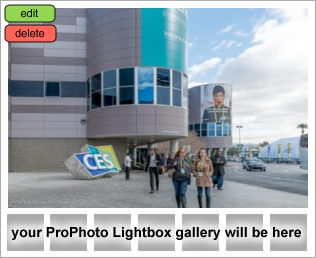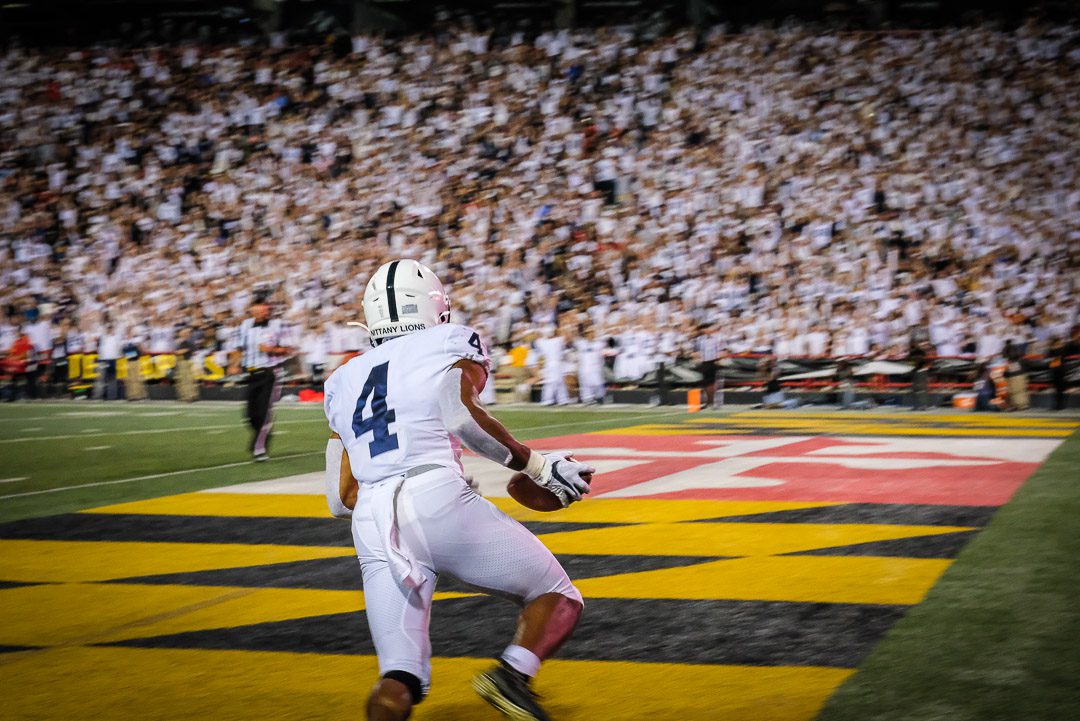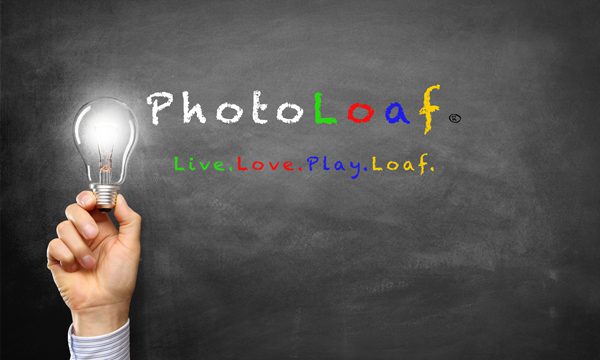Disclaimer: The opinions shared in this blog post are my own and there is no implied or expressed endorsement from the Consumer Technology Association (CTA). CES2017 began on the evening of Wednesday January 4th and ended on Sunday, January 8, 2017.
Note: A same version of this blog is available on my alternate blog site at www.mymcmedia.org – where I am a regular contributor.
It’s my 3rd year at the CES trade show and things are just now beginning to coalesce, make sense. CES 2017 was the 50th Anniversary of CES which first started in New York City in 1967.
The Consumer Technology Association (CTA) owners/producers of CES was also one of many tour providers at the show but was the only one whose tours are singularly conducted through the CTA. I helped behind the scenes as a CTA Tour Guide, Share The Love, “wrangler”.
To understand the show, know that it is the largest trade show in the world with 2.6 million net square feet of space, attended by over 175,000 people, and 60,000 Senior Level Executives from over 150 countries. It is held yearly in Las Vegas spread amongst three unique but separate venues across the city with 3,800 plus exhibiting companies and covered by 6,500 media personnel. The Las Vegas Convention Center (LVCC) known as Tech East has the largest floor space of all three venues and contains specific collection of technology companies gathered as marketplaces.
My perspective is from walking over 25 miles in my four days in Tech East and is complemented by tour commentary of CTA managers who lead these private tours catered to the needs of CTA clients and by respective tech company subject matter experts (SME) at key tour stops.
During my tours five major themes came together for me and are described as 1) IOT – the internet of things; 2) Connectivity; 3) 5G Broadband Width; 4) Cameras matched with Reality, virtual and otherwise; and 5) Holding on to the Tactile.
IoT – Internet of Things:
IoT is easiest to understand and mostly hidden from view. Everything’s being transformed by the internet and to exist going forward “things” must be viewed in this context. Listening to a SME for Alibaba, the Chinese equivalent to eBay, made the connection for me. Their AliPay portal is the world’s largest third party money exchange processor with some 450 million customers in Southeast Asia. Credit and debit cards don’t fit within their customer’s lexicon nor in their wallets so “things” are bought and paid for through smartphone devices. For us here it might be experiences with Google Home or Amazon’s Alexa, both a stationary voice device like Apple’s Siri where voice recognition on a smartphone or device plays a role in managing the daily mundane. Like “Google” turn on the lights, or “Alexa” what is the quickest route to Oriole Park at Camden Yards or “Siri” where can I find a pair of size 12 Nike sneakers, locate then use your PayPal or Apple Pay accounts to complete any resulting financial transactions.
Connectivity
Closely aligned to IOT is connectivity. For things to work properly data must be collected and analyzed, shared through the internet or connected networks then dispatched to devices that help manage daily life. Autonomous vehicles, co-piloted cars were the most visible for me of how connectivity helps in assisting human tasks previously viewed too complex to release to artificial intelligence (AI). Tech companies nVidia, AutoLiv, Faraday Future were among those that I saw and listened to in Tech East that are deploying AI in collaboration with partners to create self-driving vehicles. nVidia, the gaming company who sits at the nexus of GPU gaming processing and AI, has evolved into a leader in autonomous vehicle design.
Co-piloted/autonomous driving vehicles are more than just taking your hands of the wheel and letting the car take over. In demonstrations at the LVCC it was shown how the vehicle’s connected knowledge of surroundings such as wind conditions, curve turns, vehicle presences influenced how safely an AI guided car can maneuver. In the US, the age of our fleet of privately owned vehicles spans between 11 and 14 years and provides to auto manufacturers a unique opportunity to introduce autonomous vehicles to larger buying public. The percentage of this fleet conversion will rapidly tilt towards safer AI guided vehicles perhaps as soon as 2022. Roads will still be congested but we may see that UBER, LYFT and perhaps even major manufacturers like Ford will provide driverless vehicles that may bypass the classic ownership model. It’s a tough concept for me to grasp because I like owning and driving.
Drones were everywhere in Tech East. Some even sat on top of last mile delivery vehicles.
Last mile (Lmi) is defined (by me) as that pathway that leads to an address street side mailbox or front door mail slot, lobby mail case, or doorstep. Rural route delivery is perhaps the hardest (longest) most expensive stretch in a package’s delivery cycle. Conversely, city delivery has more choke points and the highest concentration of deliveries in the shortest Lmi range. Enter Daimler Mercedes.
I saw Daimler display a package delivery vehicle equipped with two drones and a robot inside the paneled van portion of the vehicle. Basically, a delivery driver guided by “a connected” delivery route can deliver either by foot or by one or more drones, packages from a stationary or moving routed position that final distance along a Lmi route. The applications for rural delivery in my view are immense.
So, let’s connect the Tech East dots. We have the internet of things in a connected network environment. You speak to Google and ask it to find you a pair of Nike sneakers (a thing), authorize the order and pay for it using an electronic pay account and either jump in your AI equipped car to take you to the nearest retail pickup point or perhaps have it delivered an address by a drone. Make sense – not yet because you need something else.
Cameras as a sensory input device for data collection and data sharing. I will get to that in a moment but first though, I need to explain in a non-tech sense broadband width.
5G – Broadband Width
Alright, SME’s at Ericsson, a communication technology company, did a masterful job of explaining for me the architecture of the world we currently live in as it now exists with broadband and the world to come with technology developments called 5G.
Best I can do for you is to have you look at your smartphone and see what type of data communication you reside on – probably 3G or 4G. You pay Verizon or AT&T lots of bucks each month to get data streamed over these networks or funneled to your home via cables or wireless networks. Data interruptions occur when bandwidth becomes congested or is maxed out or you are just out of range of a cell tower.
Terrestrial lines, cables, wire networks previously owned by major carriers are being sold off – I can’t explain that totally so I won’t try – but bigger things are on the way in the form of 5G.
5G broadband width exponentially expands the amount of data that can be exchanged. Unlike the previous networks (3G and 4G) this system will need more local deployment to meet the growth of data needs. Currently, construction of low height cellular towers are now being requested to be built in North Potomac, MD and in the City of Gaithersburg in and amongst neighborhoods along public right of ways right in yours or a neighbor’s front yard.
The biggest application for 5G might just well be in industrial manufacturing where connectivity of smart machines and their operators can be accomplished from thousands of miles away. Or it just may be that drone with my size 12 Nike sneakers that can direct a delivery vehicle close by to my rural home address with ease and return its drone to the base vehicle for the next delivery or for recharging all the while sending data to all with a need to know.
For this all to exist you need a larger network in place to collect, share and distribute the data. It will be on a 5G network.
I will speak more of 5G but let’s now move onto cameras.
Camera’s matched to Reality, virtual and otherwise.
Cameras were everywhere. Yep, I stopped by my favorite booth, Nikon, to catch up on the latest announcements, then fondled a few lenses and camera bodies to make my wish list.
I toured with a camera around my neck, like the thousands of others who did the same with camera varieties too numerous to name. Mine was a Fujifilm X-T2 mirrorless. A perfect pro digital camera in a non-threatening, analog design.
But the story is not about mine or others cameras, rather it is about how like our eyes it becomes an important sensory input device to the connected world.
One of the first Tech East CTA tour stops was at Intel (It’s what’s Inside) the makers of computer chips and much, much more. At Intel CTA clients saw through 3D vision glasses all the sensory collection devices built into and around a BMW touring car. We saw drones with cameras and imbedded lights used by Disney for their first ever Christmas drone nighttime color shows in the skies above Orlando, FL. Then we saw the use of cameras in conjunction with biometric wearable sport devices to record normal activities like swinging a bat, dunking a basketball or shooting a free throw. The biometrics were displayed in an instant as the movements were recorded by 3D cameras for analysis by sports metric managers. But the best part was from Intel where they partnered with Ericsson to use virtual reality to place a client user at the Ericsson booth onto the basketball court at Intel to simultaneously experience the action.
Then the light bulb was turned on by an Ericsson SME. He said he was a Dallas Cowboy fan. That he envisioned the day when a content owner like Jerry Jones, owner of the Cowboys, could and would sell you and thousands of other Cowboy fans 50-yard line seats at his stadium to watch, listen and experience an NFL game using 3D glasses and tactile input devices linked and delivered by that nearby 5G network cell pole into the comfort of your home. Crazy, not really, its IOT.
This light bulb kept getting brighter as I saw the Faraday Future autonomous vehicle, or the nVidia supported vehicle or the DJI drones – it was the camera, the eye in the sky, in the car, on the road, in the stadium that feeds the data needs and provides the connectivity across a network. Problem is – there is too much data. The future now becomes a challenge for how tech companies can parse that data, to humanize it and make it presentable for decision making, or for AI touch purposes in a human world. Then it becomes how do we as individual consumers deal with the time that remains.
Which brings me to my fifth and last perspective. Tactile.
Holding on to the Tactile, a renaissance of the analog.
Haptic, from the Greek haptesthai, meaning “to touch”. In today’s world at CES haptic is thought of as a process of perception, or recognition by touch or the typography of communication.
Springsteen sung of the tactile in his great hit Human Touch – “just a little of that human touch”. Tech companies displayed throughout Tech East things that would make my home easier to live in. Refrigerators with a touch displays on the exterior door informing me about the shelf items inside and would let me know the born-on freshness dates or when I was low on beer – maybe even order it for me. It could be moving a 3D statue with the point of a finger, or tracking my eye movements as I played a video game or looked behind sheet rock walls to locate a 2×4 or leaky copper pipe. I toured all those types of companies.
But it was when I was on my own that I found the tactile, that human touch.
Kodak issued its first print magazine in time for CES2017 targeting those who are experiencing the renaissance of analog technology calling the mag, Kodachrome. Then they announced at CES2017 the release of a camera first smartphone called of Kodak Ektra and a new Super 8 Kodak movie film camera. They also announced at CES2017 the re-introduction of the heritage film product Ektachrome (my AI spellchecker doesn’t even recognize that word) a positive film for the thousands of followers who want to feel and experience the joy of processing and viewing film and print/projection in a digital world. Who dares to announce that at a tech conference like that? Kodak.
Or the oldest American organization of over 250 years, US Postal Service, who excels in moving the physical things by touch existing by Royole, founded in 2012 in Fremont CA, who received the CES 2017 Innovation Award for their proprietary hair-thin touch screen displays.
Or Gibson guitars played by masters under Gibson’s huge white showcase tent erected in the parking lot across from the Central Hall of the LVCC at Tech East. Sure, the guitars included technology but the analog strings are touched and controlled by fingers for its master’s and listener’s enjoyment. Or recorded for posterity on records. I watched in that tent as a millennial finger through old 33 rpm albums from the 60’s and 70’s to spin on a Technics (Gibson owned) turntable. She saw me and turned to ask my opinion of which artist in the record stacks I liked as she presented John Denver and an old Elton John albums. I substituted those choices by handing her a J Geils Band 1972 Live album and an Atlanta Rhythm Section album and watched as she listened through headphones bopping to Geil’s frontman Peter Wolf vocal antics on vinyl.
But what choked me up the most was when walking out of that Gibson tent I spied an adjacent brightly lit white building. Like a moth drawn to that light I entered American Greetings. I was amazed as I entered and stood before that ubiquitous R2D2 like mail collection drop box made of clear plastic holding hundreds of addressed envelopes. There in front of me on white benches filled with greeting cards, colored envelopes and colored writing pencils sat dozens of conventioneers of all ages writing a card to a friend or loved one.
Each person at a station had laid down their smartphone and took up a pen and wrote. They needed their smartphone for their contact list but their heart to write the note. Located in the far corner of the building was a young American Greetings graphic artist designing new cards on a 4K Apple iMac using a touch pad.
I, ever the inquisitive one, sought out the exhibit SME’s and discovered that this was American Greetings first CES trade show and as far as they were concerned it was magic, a hit. I asked if they wanted to be across the street on Tech East’s floor, the answer was no, rather they wanted this spot across from Central Hall as the crowd flow was favorable during CES2017. Many of the card writers offered that they found writing relaxing and welcomed the opportunity to use the lost art to scribe a note. American Greetings was picking up the postage to mail all the cards written during the past week. Looking up at the ceiling all one could see were blank cards hanging by strings waiting for fulfillment and a stamp.
I was approached by an American Greeting’s SME as I left for my reaction to the showcase. I passed on completing a survey but offered that I think that they were onto something big here and hoped that they would return to CES next year perhaps partnering with the old school USPS. It would be great to have this continuous display of an analog world opposite the LVCC transport center lighting for all to see their red rose love symbol at CES.
For all the connectivity and internet of things it was a pure joy to see that there are those who recognize that technology can take us just so far as humans and that there is still the need for touch and to Share the Love.
Phil Fabrizio
Photos: 2017 © Fabrizio | PhotoLoaf®



